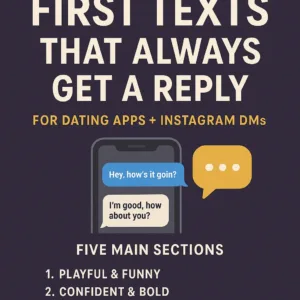Anyone who has sat through countless business presentations knows that slides alone don’t inspire change. In today’s fast-moving corporate world, successful communication depends on more than facts and figures — it’s about creating connection. A great presentation informs, yes, but an exceptional one moves people. Whether you’re pitching a new idea, leading a team meeting, or speaking to hundreds, learning how to design and deliver professional presentations can transform both your communication and your leadership impact.
The Power of Purpose in Business Presentations
Every meaningful presentation starts with a purpose. Skilled speakers understand that their goal is not to overwhelm the audience with information but to deliver a message that connects. They focus on the why behind their talk — why the idea matters, why action is needed, and why the audience should care.
When a presentation is built around purpose, it becomes a journey rather than a lecture. The audience is not just listening; they’re part of a story that makes sense, stirs emotion, and leads to a clear takeaway. This shift — from data delivery to emotional engagement — turns an ordinary update into an experience that inspires reflection and action.
Before you begin crafting your next talk, ask yourself:
“What do I want my audience to think, feel, or do when I finish speaking?”
Once that goal is clear, every slide, story, and statistic should serve that mission.
Crafting Presentations That Inspire
A professional presentation isn’t about flashy graphics or industry jargon; it’s about clarity, confidence, and connection. The best presenters know that people remember emotions long after they forget data. To make your next presentation truly inspiring, consider these principles — and add your personal touch along the way:
- Tell a Story
People are wired for stories. Framing data in a narrative gives context and meaning. Instead of simply showing figures on a chart, explain what those numbers mean for your business, your customers, or your community. Stories turn abstract content into something real and memorable. - Keep It Simple
Simplicity makes messages powerful. Avoid cluttered slides or unnecessary details. Use concise language, clean layouts, and consistent visuals. A minimalist design helps your audience focus on what truly matters — your core message. - Engage Emotionally
Facts inform, but emotion inspires action. Share personal experiences, client stories, or moments of challenge that reveal authenticity. When people feel something, they’re far more likely to remember and act on what they’ve heard. - Use Visuals Wisely
Visuals should support your message, not distract from it. Choose high-quality images, short clips, or infographics that simplify complexity. A well-placed visual can spark understanding faster than paragraphs of text. - Invite Participation
Great presenters don’t speak at people — they speak with them. Ask thought-provoking questions, include quick polls, or let participants share short insights. Interaction keeps energy high and builds genuine engagement.
The Role of Nonverbal Communication
Words carry meaning, but body language gives them power. Research shows that tone, gestures, and facial expressions often leave a stronger impression than spoken content.
Stand with open posture to signal confidence and authenticity. Use purposeful movement to emphasize transitions or key points. And above all, pause — a well-timed silence can be as powerful as a sentence. When your voice, gestures, and energy align, your message feels genuine and compelling.
Turning Messages into Movements
The most remarkable keynote speakers don’t just deliver ideas — they spark transformation. Think of leaders like Steve Jobs, Simon Sinek, or Brené Brown. Their talks did more than inform; they ignited belief systems and built communities around shared purpose.
The secret lies in the balance of purpose, passion, and perspective:
- Purpose: Why are you speaking? What do you want to change?
- Passion: Why do you care? Authentic enthusiasm is contagious.
- Perspective: How does your message improve your audience’s world?
When these three align, communication transcends the room. It spreads — through teams, companies, even cultures.
Example:
Imagine a sustainability manager presenting a plan to reduce waste. Instead of listing percentages and targets, she begins with a simple story: a child asking why the company throws away so much plastic. That single image shifts the tone from compliance to commitment. The numbers still matter, but they’re now anchored in purpose and emotion.
Or picture a CEO addressing a struggling sales team. Instead of showing quarterly losses, he shares how customer trust eroded — and how every interaction can rebuild it. By linking data with human experience, he turns statistics into motivation.
That’s how messages evolve into movements.
Overcoming Common Presentation Barriers
Even seasoned professionals face challenges when presenting: stage fright, information overload, or lack of time. Here are a few proven strategies to handle them effectively:
- Nervousness: Channel your energy. Deep breathing, stretching, or a short visualization before stepping on stage can center your focus.
- Too Much Content: Ask yourself, “What would my audience miss most if I cut this slide?” If the answer is “not much,” delete it.
- Monotone Delivery: Vary your pace and tone. Shift between storytelling and concise summaries to keep rhythm and attention.
- Lack of Connection: Step away from the podium. Make eye contact. Ask a question early to turn your speech into a shared moment.
Mastering these small techniques builds confidence — and helps you stay authentic even under pressure.
Final Thoughts — Speak to Inspire
In the world of leadership and business, your ability to communicate ideas clearly and authentically defines the reach of your influence. Whether you’re speaking to clients, investors, or your own team, remember this: every word, every gesture, and every pause should serve one purpose — to connect and inspire.The best presenters don’t just share ideas; they ignite change. They turn hesitation into belief and concepts into action. So next time you step up to speak, don’t aim merely to inform — aim to transform. Because when your message moves people, your words don’t end when the talk does; they continue as a ripple that shapes conversations, decisions, and movements long after you’ve left the stage.
Read Also: Responses to National Text Your Ex Day: What to Say, What to Avoid, and How to Protect Your Peace
Recommended Products

Habit Building Strategies for Minimalist Living | Speak Awesomely Guide
Original price was: $ 12.$ 5Current price is: $ 5.Add to Cart
Unshakable Self Confidence PDF Guide | Speak Awesomely
Original price was: $ 10.$ 5Current price is: $ 5.Add to Cart
100 First Texts That Always Get a Reply
Original price was: $ 15.$ 5Current price is: $ 5.Add to Cart
All Emoji Meanings Guide (3500+)
Original price was: $ 15.$ 7Current price is: $ 7.Add to Cart








